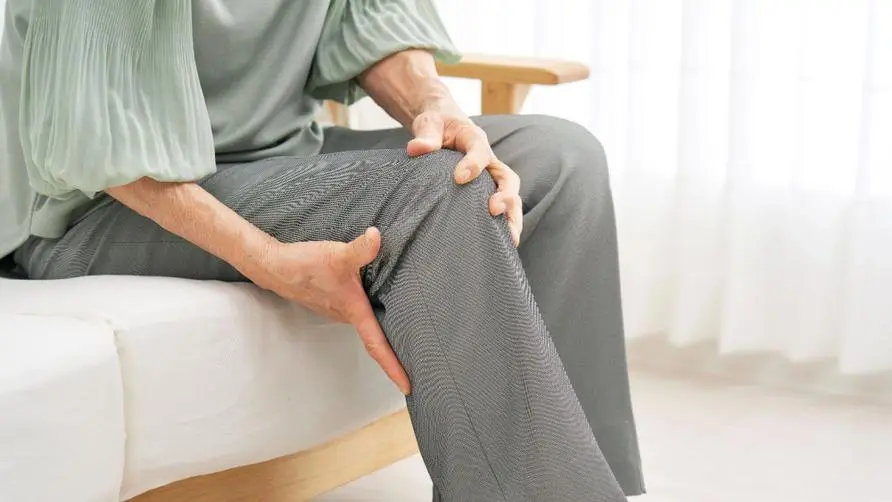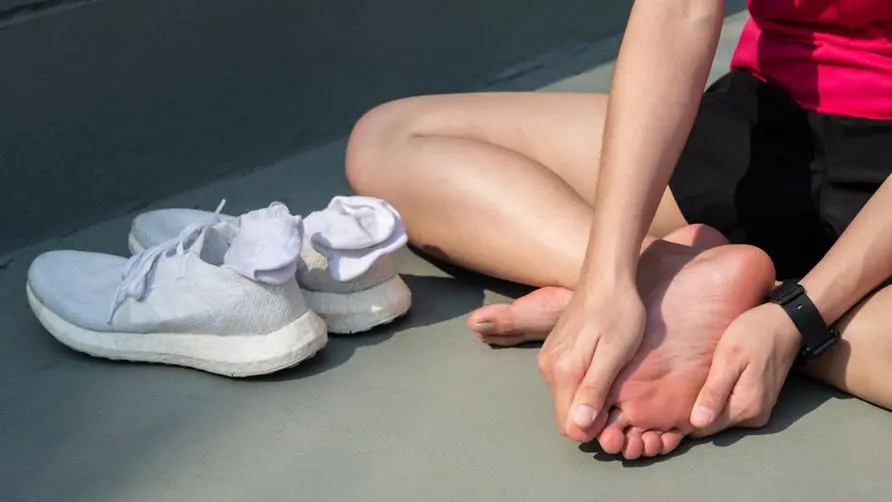Do your feet hurt when you first get up? It may be a warning sign of "Plantar Fasciitis"! Doctors reveal "3 trainings" to improve pain

Who is most susceptible to plantar fasciitis? Are being too fat and loving sports all risk factors?
If you like to climb mountains and jog, or are even overweight, if you experience chronic pain in the soles of your feet, you should pay attention to whether it is “plantar fasciitis”. Dr. Zheng Yuxuan, the attending physician of the Department of Rehabilitation Medicine of Wanfang Hospital, pointed out in an exclusive interview that plantar fasciitis is often caused by excessive pressure on the arch or sole of the foot; it is common in people who are born with flat feet, or those who engage in weight-bearing work, have injured their soles, and often People who engage in leisure sports such as long-distance running or mountain climbing, or even those who are obese or overweight, may cause pressure on the soles of the feet and induce plantar fasciitis.
In addition, patients with diabetes are more susceptible to soft tissue lesions and are also a high-risk group for plantar fasciitis. According to previous literature, there is no significant difference in the occurrence of plantar fasciitis between men and women.
Dr. Zheng Yuxuan said that plantar fasciitis is most likely to occur in the heel, rather than the arch or forefoot. Therefore, if you wear shoes with too thin soles and are used to landing with your heel, you are more likely to develop plantar fasciitis. Plantar fasciitis is different from acute inflammatory conditions such as strains and bruises. From ultrasound examination, it can be found that the patient’s soles are thicker, the fiber texture is less clear than ordinary people, and the heel is not soft enough. It is more likely to be a type of plantar fasciitis. “Chronic tissue degeneration”.
“Jogging shoes” may cause severe injury to the soles of the feet! Doctors reveal: Changing “these soles” can effectively relieve pressure
Dr. Zheng Yuxuan pointed out that the occurrence of plantar fasciitis is related to the patient’s daily living habits, walking gait, and foot shape, and the causes are relatively complex. Basically, it is recommended that people with old foot injuries and those who love outdoor activities should change the type of shoes to prevent plantar fasciitis if they experience foot discomfort. For example, the soles of jogging shoes are thin in design and often lack support. When running, the soles of the feet are in closer contact with the ground, causing greater damage.
Dr. Zheng Yuxuan suggests that people with the above problems can switch to “boat-shaped sole” shoes with thicker midsoles and raised front and rear heels, which can release heel pressure and relieve plantar discomfort. However, the selection of shoes cannot be considered uniformly. Everyone’s foot muscle exertion habits are different. Basically, choose shoes that are comfortable and will not cause pressure or pain when walking. In addition, if you wear shoes with a heel height of more than 5-6 cm, it is recommended to take a moderate rest while walking, otherwise it will cause excessive pressure on the heel and increase the risk of illness.
What are the treatments for plantar fasciitis? Be careful if the pain is severe when you “take the first step” out of bed!
What are the obvious symptoms of plantar fasciitis? Dr. Zheng Yuxuan explained that the most common effect is that patients will feel obvious discomfort when they take the first step after getting up in the morning and working and sitting for a long time; and because the pain in the sole of the foot will subside as the muscles and bones relax, patients often ignore the related symptoms, leading to delays in seeking medical treatment.
Dr. Zheng Yuxuan emphasized that if patients with plantar fasciitis are left untreated for a long time, the pain will change the patient’s gait and cause secondary pain or injury to the joints and muscles of the lower body. “In the beginning, there is only pain in the sole of the foot. After a long time of pain, it may cause “compensatory gait”, causing imbalance of muscles and joints. If overloaded, it may lead to multiple pains in the lower body!”
Regarding the treatment of plantar fasciitis, Dr. Zheng Yuxuan explained that in terms of non-invasive conservative treatment, if the foot encounters a sudden impact and causes acute pain, you should first apply “ice” or take anti-inflammatory drugs to relieve the pain. Chronic pain such as plantar fasciitis is treated with “hot compress” first. In addition, ultrasound therapy and electrotherapy, which are often used in rehabilitation departments, can also be used to relax the foot locally.
In terms of invasive treatment, steroid injections are traditionally used to reduce local inflammation and swelling. The effect is relatively rapid, but it has no obvious effect in the long term. If the injection is excessive, there is a risk of fibrous tissue atrophy; in addition, “proliferation therapy” can also be chosen ( prolotherapy), common proliferating agents include high-concentration glucose and autologous platelet preparation (PRP), which can be used for plantar fasciitis that is mainly chronic inflammation, and the right medicine can be prescribed through different therapies.
How to prevent plantar fasciitis from occurring? Doctors reveal 3 ways to relieve discomfort using “Arch Exercises”
What methods can be used to prevent or relieve plantar fasciitis? Dr. Zheng Yuxuan said that “relaxation” is crucial for patients with plantar fasciitis. Therefore, people can stretch, massage or use compression foot pads at home to relieve foot pressure and strengthen arch support. In addition, those with exercise habits can also try adding “heel pads” to their shoes, or try changing to shoes with boat-shaped soles to reduce the impact of the ground on the feet.
Dr. Zheng Yuxuan reminds the public that if you need to wear leather shoes with hard soles and high heels for work, you should be aware that long-term compression of the heels can lead to plantar fasciitis. If they are not going to formal occasions and are only used for commuting to work, office workers or suitors can give priority to sports shoes or boat-shaped shoes that look like leather shoes but have thicker bottoms. Women who wear high heels, which more significantly affect the front heel, need to pay attention to the risk of “metatarsal pain”.
Finally, Dr. Zheng Yuxuan said that if you have any discomfort in your feet, it is recommended to seek medical treatment at a rehabilitation department or orthopedic clinic as soon as possible. Severe cases require further medication. Do not delay treatment and affect the health of the lower body.
Further reading:





